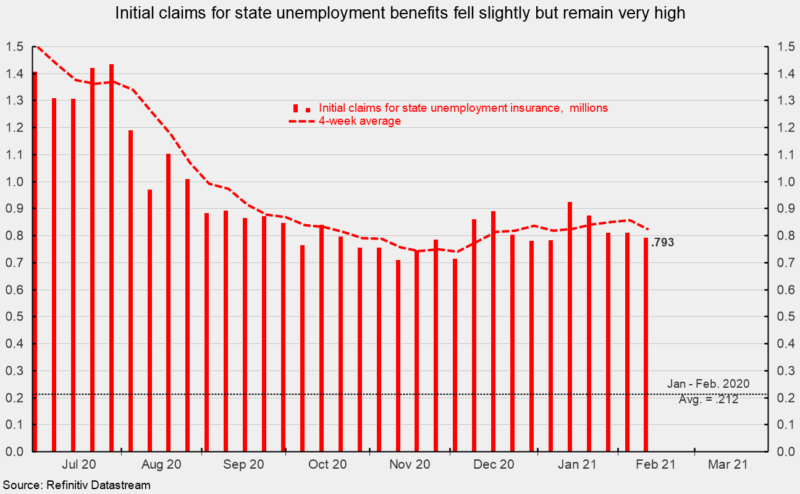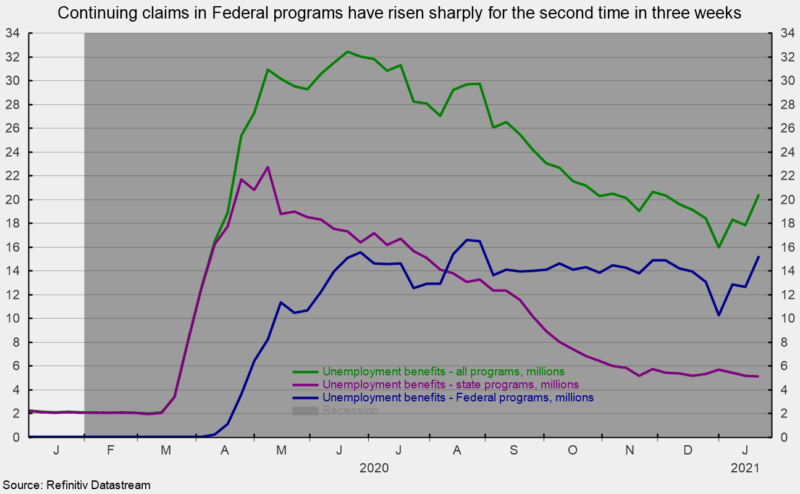Labor Market Struggles Continue
Initial claims for regular state unemployment insurance totaled 793,000 for the week ending February 6, down 19,000 from the previous week’s revised tally of 812,000 (see first chart). Claims have hovered around the 800,000 level for 10 consecutive weeks since posting a 716,000 result in early December. Initial claims have continued to run in the 700,000 to 1 million range for 24 consecutive weeks and remain well above the pre-pandemic level of 212,000 in early 2020 (see first chart).
The four-week average fell 33,500 to 823,000. The average had drifted higher since hitting a low of 740,500 for the week of November 28, rising in nine of the eleven weeks prior to the most recent result. Still, even after the decline in the latest week, the average is above the November low. Persistent initial claims at such a historically high level remain a threat for the labor market recovery and the economy.
The number of ongoing claims for state unemployment programs totaled 5.156 million for the week ending January 23, down 32,295 from the prior week. State programs had been trending lower since early March, but the downward trend has turned to a flattish trend since the week ending November 21 (see second chart). For the same week in 2019, ongoing claims were 2.149 million.
Continuing claims in all federal programs jumped in the latest week, the second sharp increase in the last three weeks, coming in at 15.279 million for the week ending January 23, up 2.629 million (see second chart). For the three-week period, continuing claims in Federal programs are up 5.018 million.
The total number of people claiming benefits in all unemployment programs including all emergency programs was 20.435 million for the week ended January 23, up 2.597 million from the prior week.
Government restrictions on consumers and businesses remain a significant threat to the outlook for economic growth. The development and distribution of vaccines is a very positive factor and should eventually lead to sharply less government restrictions. In the meantime, the claims data combined with the disappointing jobs report for January suggest the labor market remains weak. The longer the virus continues to spread (along with the possibility of mutations prolonging the outbreak), consumers remain restricted, and businesses remain closed or limited, the more uncertain a labor market recovery becomes and the higher the probability of a slow and drawn-out economic recovery.







